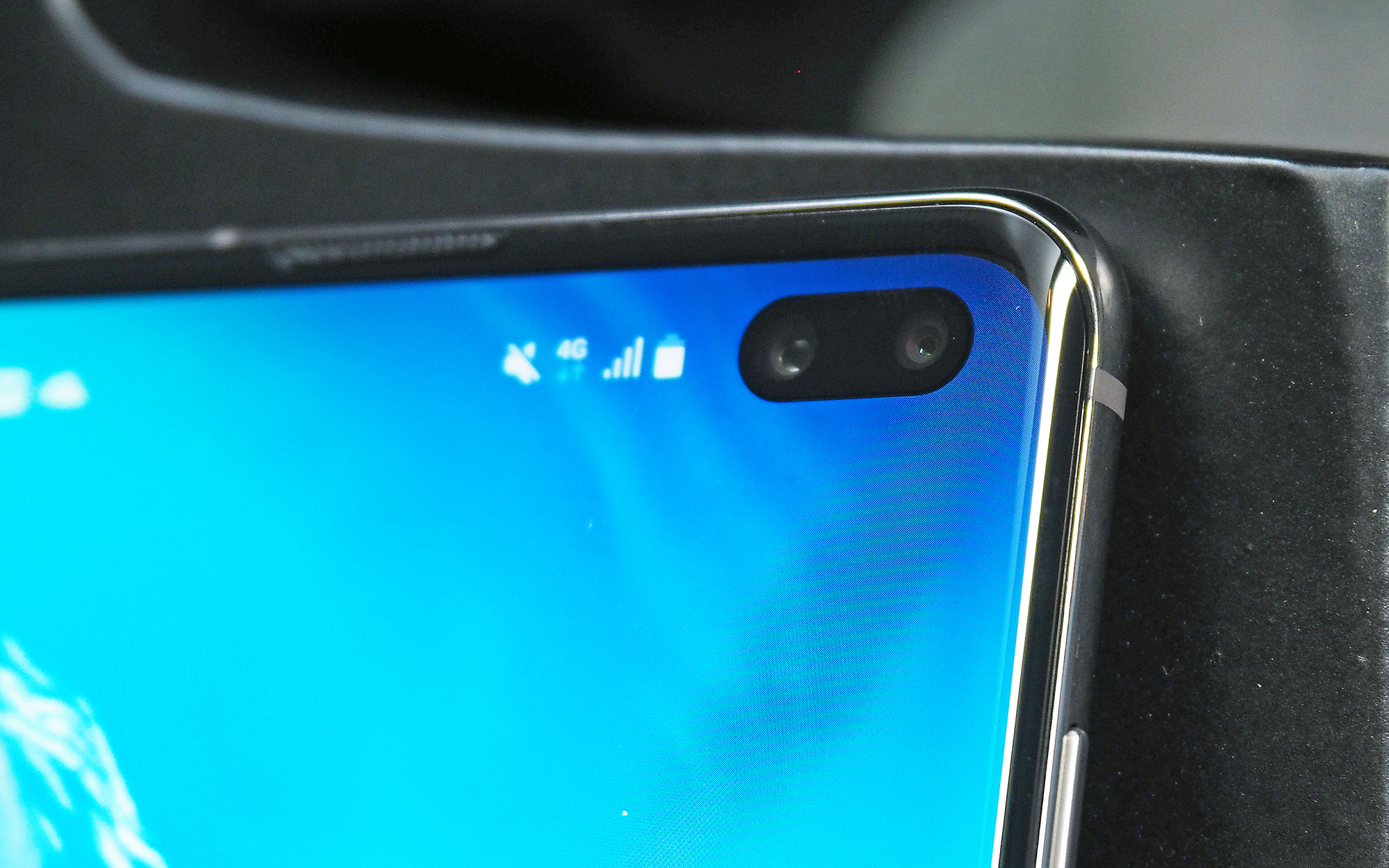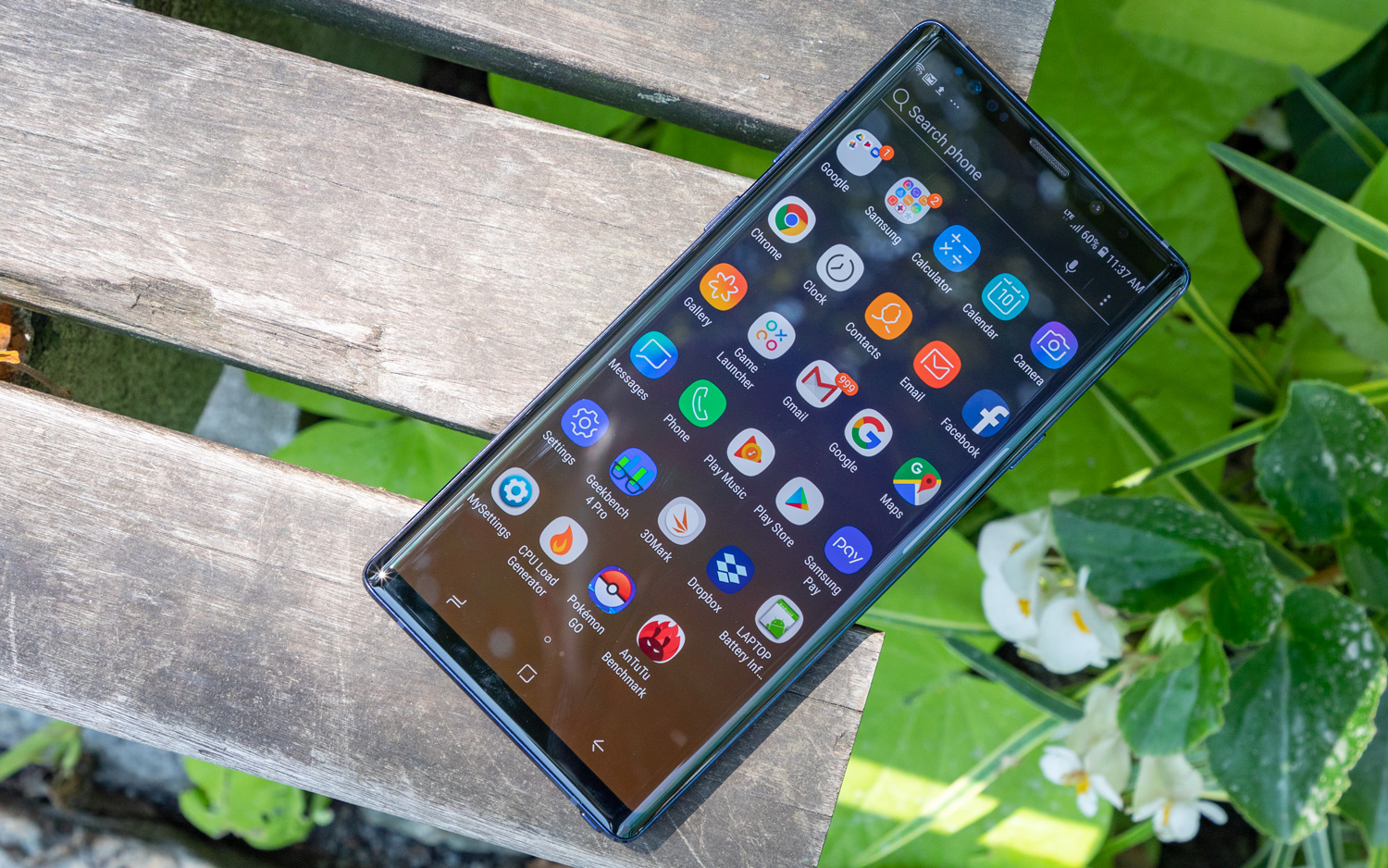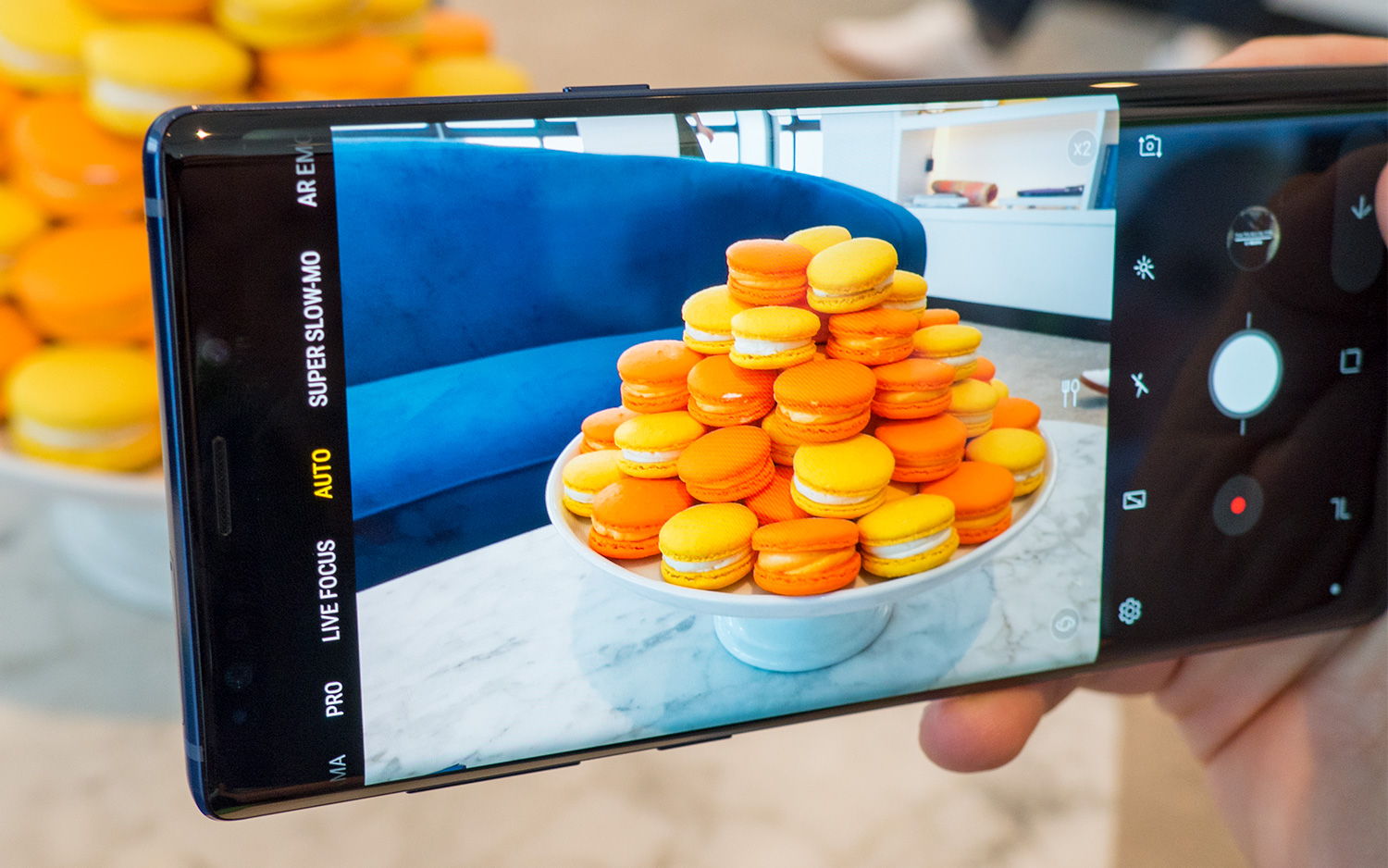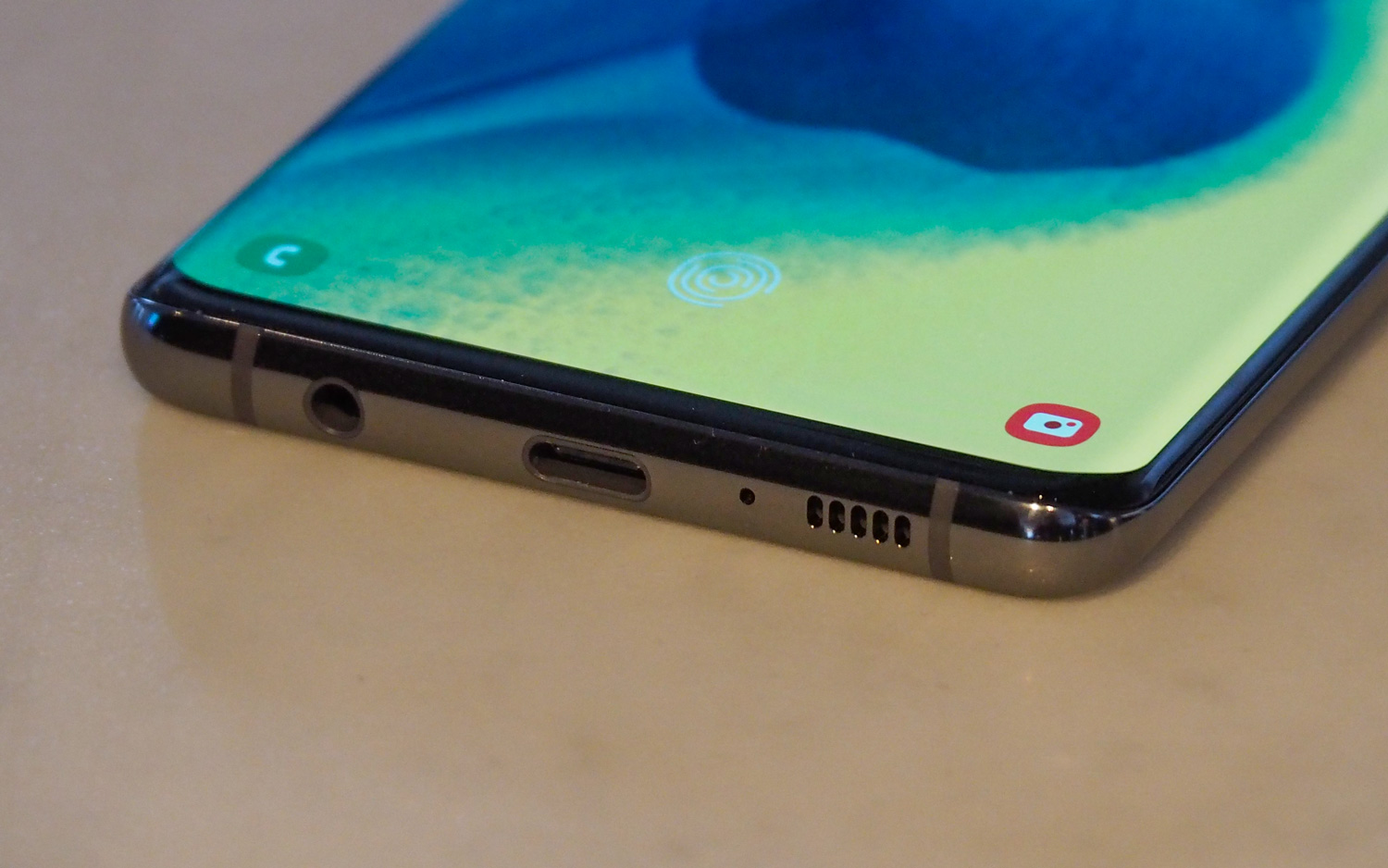Galaxy S10 vs. Galaxy Note 9: Which phone should you buy?
Is Samsung's newer flagship that much better?
Updated, Nov. 14: We've added photo comparisons between the Galaxy S10 and Galaxy Note 9.
There used to be no dispute as to which Samsung phone was the company's big-screen beast. The Galaxy Note series featured the largest displays, the most processing oomph, and the features most obviously geared toward anyone who subscribed to the theory that Bigger Is Almost Always Better.

That question became a bit more complex when the Galaxy S10 lineup came out this spring, highlighted by the Galaxy S10 Plus, one of the best phones we saw in 2019. The S10 Plus' display is every bit as big as what you'd find on Samsung phablets like the Galaxy Note 9, and the 6.1-inch Galaxy S10 isn't that much smaller. What's more, Samsung has packed the kind of features into the Galaxy S10 that used to be firmly in the Note's domain. As a result, the choice of which big-screen Samsung phone to get isn't as clear as it was before.
We've reviewed both the S10 Plus and S10, with enough hands-on time to compare and contrast these two phones with the older Note 9. Here's how these big-screen Samsung phones compare at this point.
If you're looking for something newer, then check our Galaxy Note 9 vs. Galaxy Note 20 face-off to see how Samsung's newest Note phone fares.
Editors' Note: Since this face-off was first published, Samsung updated its Note lineup over the summer, introducing the Galaxy Note 10 and Galaxy Note 10 Plus. To see how Samsung's newer phablets compare to the S10 lineup, check out our Note 10 vs. Galaxy S10 face-off.
| Phone | Galaxy S10 | Galaxy S10 Plus | Galaxy Note 9 |
| Starting Price | $899 | $999 | $999 |
| Screen (Resolution) | 6.1-inch Dynamic AMOLED (3040 x 1440) | 6.4-inch Dynamic AMOLED (3040 x 1440) | 6.4-inch Super AMOLED (2960 x 1440) |
| CPU | Snapdragon 855 | Snapdragon 855 | Snapdragon 845 |
| RAM | 8GB | 8GB/12GB | 6GB/8GB |
| Storage | 128GB, 512GB | 128GB, 512GB/1TB | 128GB/512GB |
| MicroSD? | Yes, up to 512GB | Yes, up to 512GB | Yes, up to 512GB |
| Rear Camera | 16-MP ultra-wide (f/2.2), 12-MP dual-pixel wide (f/1.5, f/2.4), 12-MP telephoto (f/2.4) | 16-MP ultra-wide (f/2.2), 12-MP dual-pixel wide (f/1.5, f/2.4), 12-MP telephoto (f/2.4) | Dual 12-MP (f/1.5, f/2.4) |
| Front Camera | 10-MP dual-pixel (f/1.9) | 10-MP dual-pixel (f/1.9), 8-MP depth sensing | 8-MP (f/1.7) |
| Fingerprint Sensor | Ultrasonic in-display | Ultrasonic in-display | Rear-mounted |
| Battery | 3,4,00 mAh | 4,100 mAh | 4,000 mAh |
| Battery Life (Hrs:Mins) | TBD | 12:35 | 11:26 |
| S Pen Support? | No | No | Yes |
| Size | 5.9 x 2.77 x 0.3 inches | 6.2 x 2.91 x 0.3 inches | 6.3 x 3 x 0.3 inches |
| Weight | 5.5 ounces | 6.2 ounces | 7.1 ounces |
| Colors | Flamingo Pink, Prism Black, Prism White, Prism Blue, Prism Green | Flamingo Pink, Prism Black, Prism White, Prism Blue, Prism Green, Ceramic White, Ceramic Black | Lavender Purple, Ocean Blue, Cloud Silver, Midnight Black |
Design and Display
When comparing the Galaxy S10 and the Galaxy Note 9, it's hard to start anywhere other than the displays. That's because the S10 Plus model now features a 6.4-inch OLED panel stretching from edge to edge, just like the Note 9.
Get instant access to breaking news, the hottest reviews, great deals and helpful tips.

But there are some key differences with that screen. The resolution on the S10 Plus is a bit sharper at 3040 x 1440 to the Note 9's 2960 x 1440. The S10 Plus also uses Samsung's new Dynamic OLED panel, which should feature a wider range of colors due to its support for dynamic-tone mapping. The 6.1-inch S10 offers the same resolution as the S10 Plus on its Dynamic OLED screen

That said, when we tested the S10 Plus' display, it registered 136.5% of the sRGB color gamut, compared to 224% for the Note 9. The S10 Plus displays colors more accurately, with a Delta-E score of 0.29 to the Note 9's 0.34. (Numbers closer to zero are better.) The S10 Plus has a slightly brighter screen as well (625 nits versus 604 nits for the Note 9), though we got that number by shining a flashlight at the S10's sensor.
The smaller S10 compares more favorably, capturing 208.2% of the sRGB color gamut. Its Delta-E rating of 0.38 was a shade worse than the Note 9's score. And the S10 is plenty bright, too, with a reading of 611 nits.
Samsung's phones also achieve their edge-to-edge displays in different ways. The Note 9 features a bezel at the top to house its front-facing camera. But the S10 and S10 Plus opt for Samsung's new Infinity O display and its punch-hole design, where the camera is housed in a cutout in the middle of the screen. (In the S10 Plus's case, that cutout contains two front cameras, as we'll discuss in a moment.) The end result is that the S10 Plus squeezes more screen into a smaller form factor than the Note 9, but that punch hole could stand out when you're using apps or watching videos that fill the whole screen.

Regarding form factor, the S10 Plus is a little shorter and less wide than the Note 9 at 6.2 x 2.91 x 0.3 inches. It weighs less, too, tipping the scales at 6.17 ounces to the Note 9's 7.1 ounces. With its smaller screen, the S10 is the most compact of the bunch at 5.9 x 2.77 x 0.3 inches and 5.5 ounces. (There's an even smaller version, the Galaxy S10e, but it lacks some of the higher-end features of the S10 and S10 Plus and really isn't much of an alternative to the Note 9.)

Another big design change becomes apparent when you spend some time with the phones. The S10 and S10 Plus use an ultrasonic fingerprint sensor that fits underneath their displays. (A modest cutout gives you a clue as to where to place your finger to unlock your phone.) The Note 9, like other recent Samsung phones, puts the fingerprint sensor on the back. (Though thankfully, it's beneath the dual cameras instead of next to the lenses.)
MORE: Best Galaxy S10 Deals Right Now
You'll get contrasting choices in colors depending on which phone you favor. The Note 9 comes in four shades — Lavender Purple, Ocean Blue, Cloud Silver and Midnight Black. S10 shoppers can choose between Flamingo Pink (unless you're in the U.K.), Prism Black, Prism White and Prism Blue. (If you're outside the U.S., add Prism Green to the mix.) Higher-capacity versions of the S10 Plus come in Ceramic Black or Ceramic White.
Winner: Galaxy S10
Cameras
Samsung introduced dual cameras to its flagship phones with the Note 8, and the Note 9 continued that tradition with a pair of 12-megapixel shooters. The S10 and S10 Plus up the ante by adding a third lens to the back — a 16-MP ultra-wide-angle camera joins the 12-MP main lens and 12-MP telephoto shooter. (The 6.1-inch Galaxy S10 features this triple-lens setup, too.)

That means either S10 model will give you the option of pulling back when you want a shot that captures more of the surrounding details, while also letting you zoom in as you can with the Note 9. The S10 main dual-pixel camera has the same variable aperture as the Note 9 that lets in more light when you're taking pictures in the dark.

The secret sauce to the Note 9's camera was artificial intelligence, capable of recognizing different scenes and adjusting camera settings accordingly. The S10 models add more smarts to now recognize 30 different scenes, compared with the Note 9's 20.
Up front, you get more lenses on the S10 Plus, too. There's an 8-MP depth-sensing camera joining the 10-MP selfie cam on Samsung's newest phone. The Note 9 gets by with a single 8-MP lens up front. Samsung says the two lens on the S10 Plus can improve the bokeh effects on portrait shots, and that the new phone's front cameras can capture Ultra-HD video, too.
We pitted the Galaxy S10 Plus against the Note 9 in a camera face-off. (The camera set-ups on the S10 and S10 Plus are pretty much the same, save for that extra selfie cam on the S10 Plus, so we'd expect similar results if we used Samsung's S10 in a photo face-off with the Note 9.) There wasn't much separating the two phones, and in some tests, the Note 9 actually did better than the newer models. This indoor shot of baked goods, for example, features better contrast in the Note 9's image, without as much color saturation. The Note 9 also performed better in low light.
Once outside, though, we began to see the benefits of the triple lenses on the Galaxy S10 Plus. The ultra-wide lens let us pull back and capture more details, and when we used the telephoto lens, as in this shot of some tulips, the S10 Plus did a better job handling shadows.
The S10 Plus also fared better when taking group portraits and selfies. In this self-portrait, a lot of sunlight comes streaming in from the left, and it proves too much for the Note 9 to handle with some of my colleague Adam's face washed out in the final shot. The S10 Plus' effort is better balanced and background details look sharper.
Winner: Galaxy S10
Performance
After benchmarking Samsung's phones, we have a clear sense of how the S10 performs compared to the Note 9s. The Note 9 is no performance slouch, running on Qualcomm's Snapdragon 845, the chipset of choice for 2018's flagship Android devices. But all the Galaxy S10 models feature a new system-on-chip, the Snapdragon 855, which Qualcomm says benefits from the biggest performance increase ever for a Snapdragon update. And that makes a big difference in our Galaxy S10 benchmarks.

On Geekbench 4, which gauges overall performance, the Galaxy S10 scored 10,813, the best number we've ever seen from an Android device when we ran that test in the spring. (Subsequent Android phones have since topped that number.) The Galaxy S10 Plus was just behind that number, with a 10,732 result
The Galaxy Note 9 scored 8,876 on Geekbench 4, so you can expect a better than 20% improvement no matter which S10 model you prefer.
The S10 and S10 Plus also topped the Note 9 when we tested graphics using 3DMark's Sling Shot Extreme benchmark. The latest Samsung phones turned in respective scores of 5,606 (S10) and 5,648 (S10 Plus), besting the Note 9's 4,639 result by 21-22%.
The S10 Plus enjoys an extra advantage when measuring performance because its base model features more RAM. It ships with 8GB of memory, compared with 6GB in the Note 9's base model. You could upgrade to 8GB in the Note 9, but the S10 Plus's variations include a model with up to 12GB of RAM.
MORE: First Galaxy S10 Benchmarks: Meet the Fastest Android Ever
The S10 Plus comes with the same amount of storage in its base model as the Note 9 — 128GB. And while both phones feature a 512GB option, only the S10 Plus lets you buy a phone with 1TB of storage.
Winner: Galaxy S10
Battery
The 4,000 mAh battery in the Note 9 was the biggest power pack ever included with a Samsung phone. The operative word there is "was," as the S10 Plus features a 4,100 mAh battery. The S10, meanwhile, gets by with a 3,400 mAh battery.

The S10 Plus makes use of its bigger battery, lasting 12 hours and 35 minutes on our battery test, where the phone continuously surfs the web over T-Mobile's LTE network until it runs out of power. The Note 9 lasted for 11:26 on that test, and that was with the phone's adaptive display feature turned off. So you can expect the S10 Plus to last more than hour longer than its big-screen sibling. Still, both devices are on our list of the longest-lasting phones.
We can't say the same for the Galaxy S10, which suffers from that smaller battery. It lasted 10 hours, 19 minutes on our test, which is a little better than average for a smartphone.
The S10 and S10 Plus boast one power management feature you won't find on the Note 9. The new phones' Wireless PowerShare feature lets you use any S10 as a reverse charger to wirelessly power up other devices — including the Note 9.
Winner: Galaxy S10
Software and special features
The S10 lineup introduces Samsung's new OneUI skin for Android, which is marked by rounder icons and a redesigned layout meant to make it easier to use large phones with just one hand. That last point is relevant to the S10 Plus and its 6.4-inch screen. Of course, Note 9 users have been able to get the OneUI beta since last year, so they're not missing out on this new interface. And the Android 9 Pie update has been rolling out to the Note 9, bringing that phone in line with the OS version that ships on Samsung's new S10 phones. (That said, Samsung has launched a beta for the OneUI 2.0 interface based on Android 10. The S10 is going to get that update; we're not so sure about the Note 9.

If there's one area where the Note enjoys a big advantage over the Galaxy S lineup, it's the S Pen that comes with Samsung's phablet. The Note 9 saw a particularly welcome improvement to its stylus, as you can now use the S Pen as a remote control.

By turning the pen into a remote shutter, you can control music playback or even snap a photo. Even with the improvements to the S10 and S10 Plus, Samsung's latest flagships don't offer anything quite like the S Pen that comes with the Note 9.
Winner: Note 9
Price and availability
The S10 Plus is the most expensive phone in the new S10 lineup, with a starting price of $999 for the 128GB model with 8GB of RAM. Upgrading your storage to 512GB or 1TB will set you back $1,249, or $1,599. The S10 is a comparative bargain at $899, with an upgrade to 512GB available for $1,149. We keep tabs on the latest Galaxy S10 deals to see if you can get either new model for less.
Galaxy S10: Samsung's flagship starts at $899 for the 6.1-inch version of the phone. If you want a screen to match the Galaxy Note 9, you'll want the $999 Galaxy S10 Plus.
The S10 Plus's asking price is in line with what Samsung charged for the Note 9 when it debuted last August. Then, the base model cost $999, while a 512GB Note 9 cost you $1,249. Prices have fallen since the release of the Galaxy Note 10, though not steeply. Most places charge $899 for the older Note now, though you can get a lower price with a trade-in. Check the latest Note 9 deals to see if there are any chances to save on the cost of this phone.
Galaxy Note 9: The arrival of the newer Galaxy Note 10 means a price drop for last year's Note 9. You can now get that phone for anywhere from $725 to $899.
Since March, the Galaxy S10 is now widely available — you can buy it from Samsung, all four major U.S. carriers, regional carrier US Cellular, Xfinity Mobile and retailers including Amazon, Best Buy and Walmart. Several prepaid carriers, including Metro by T-Mobile, Boost and Cricket, now offer the phones, too. The Note 9 has been on sale since last year and remains available at most carriers.
Winner: Galaxy S10
Bottom line
The Galaxy S10 is clearly the better phone than its older sibling, winning every category save for special features where the Note 9 is still tops thanks to that powerful S Pen. We think the Galaxy S10 Plus is the best Android phone you can get right now, and if you like the flexibility that the S Pen has to offer, the more recent Galaxy Note 10 is a better big-screen option than last year's Note. The main reason to turn to the Note 9 is to save a little money.
The main takeaway here, though, is just how outstanding the Galaxy S10 is, particularly the S10 Plus, which gives the Note some serious competition for Samsung's big-screen phone of choice. The display is just as large as what you get on a Note 9, you'll enjoy better performance, and the new phone's battery lasts longer on a charge.
f you're a big-phone fan, you've never had a better range of choices for your next handset. And the Galaxy S10 Plus is hard to beat.
Philip Michaels is a Managing Editor at Tom's Guide. He's been covering personal technology since 1999 and was in the building when Steve Jobs showed off the iPhone for the first time. He's been evaluating smartphones since that first iPhone debuted in 2007, and he's been following phone carriers and smartphone plans since 2015. He has strong opinions about Apple, the Oakland Athletics, old movies and proper butchery techniques. Follow him at @PhilipMichaels.
 Club Benefits
Club Benefits








